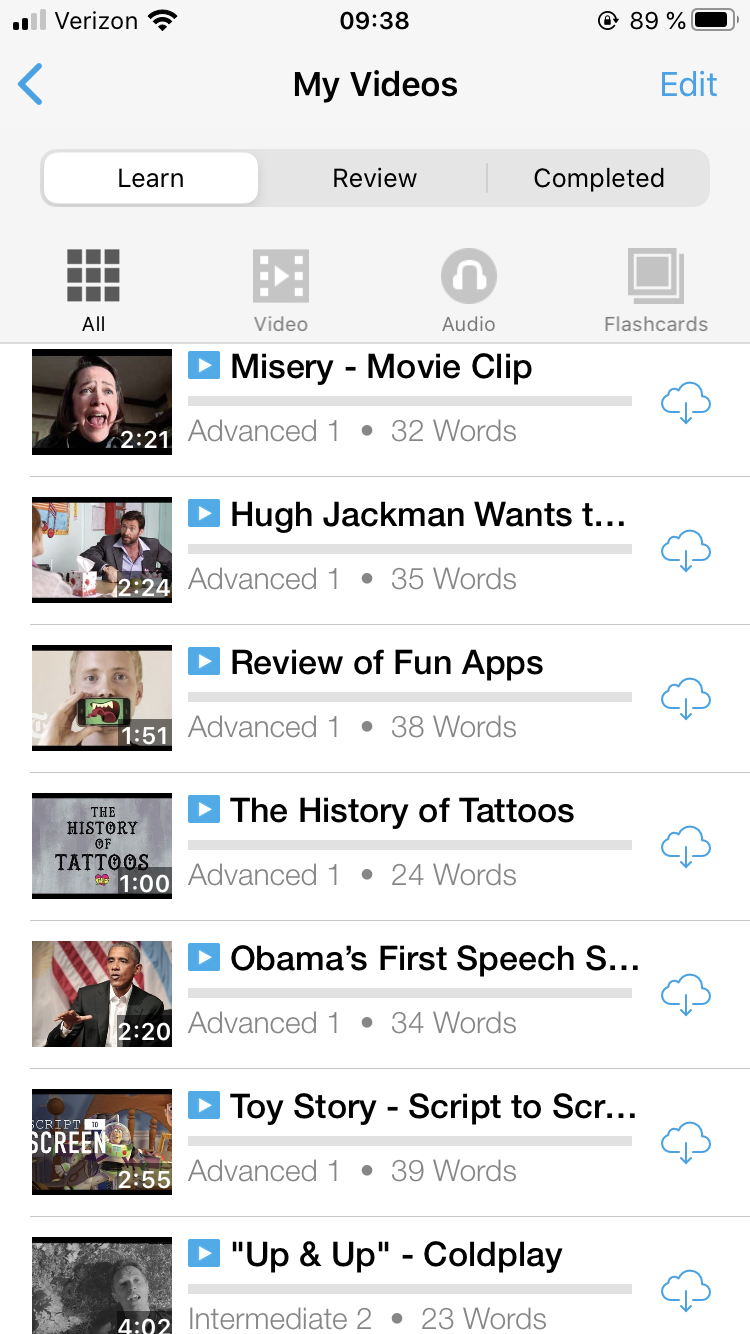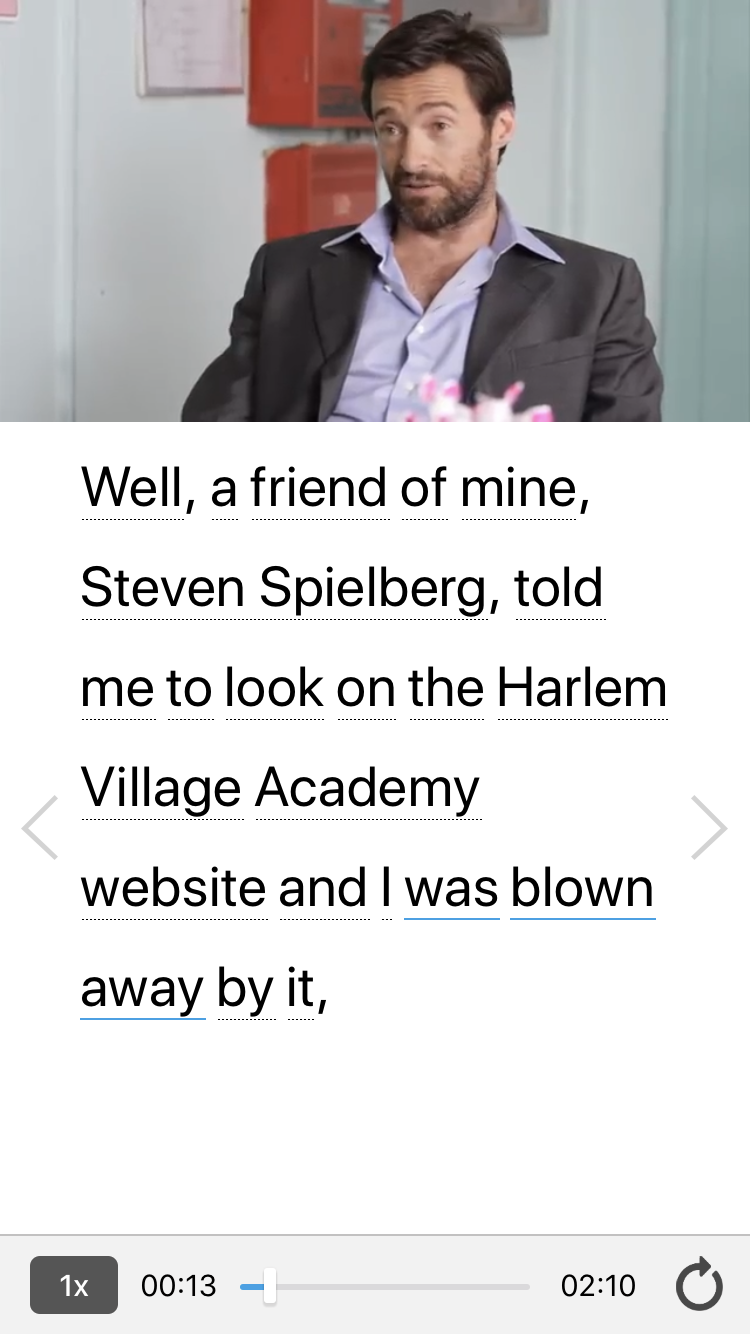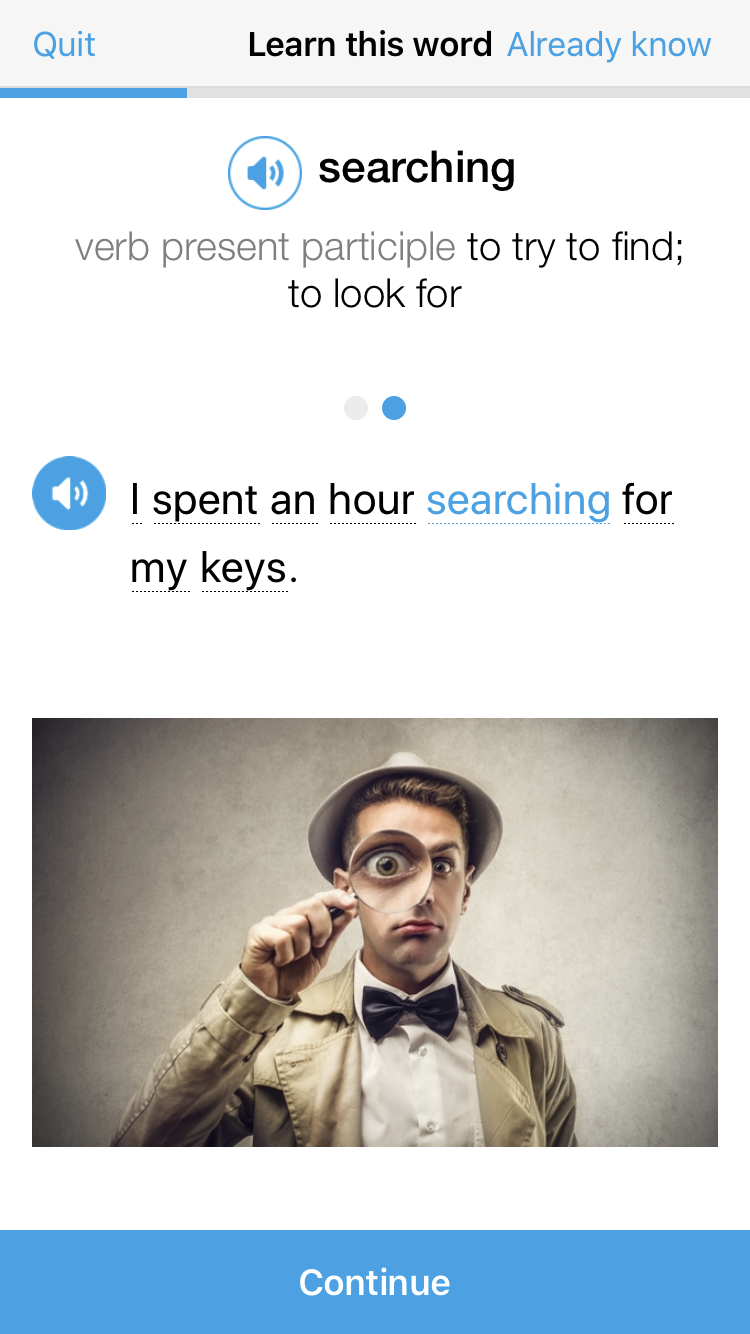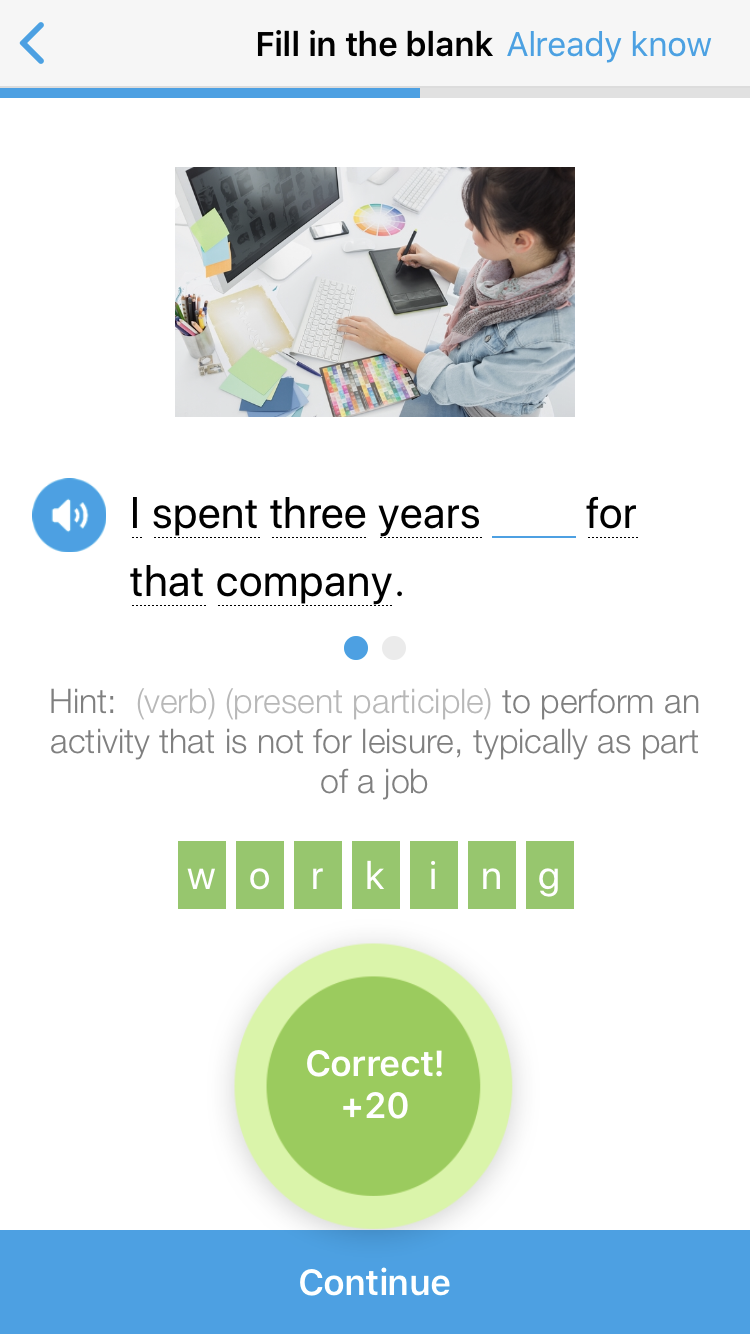How To Describe A Personality In Writing
How would you describe yourself?
If that seems like a difficult question to answer, it's okay!
Even native speakers sometimes find it hard to talk about themselves in English.
Describing yourself is really just telling people what you're like.
You can tell someone what you look like.
You can say what your personality is like.
You might even say where you're from or where you work.
There are many different ways to describe a person!
Whether you're describing yourself or someone else, knowing what some of these different ways are can be a big help.
Download: This blog post is available as a convenient and portable PDF that you can take anywhere. Click here to get a copy. (Download)

Why Describe Someone?
We describe people all the time. For example, you might tell your friends what your boss is like. You might tell your sister what that cute guy you saw looks like.
Even outside of everyday conversations, it's very useful to know how to describe people. Descriptions are used a lot in books, in articles and in other kinds of communication in English. Reading or hearing a description of someone can give you a better idea of what they look like or act like.
Descriptions are also useful in the business world, often crucial to conversations and presentations at work.
By the way, if you care about excelling in professional environments, we'd recommend you check out Creativa.
Creativa provides premium, highly produced videos for learning English and business communication skills. Creativa provides entertaining videos, useful but unexpected tips, and goes beyond just English to teach you body language, intonation and specific pronunciation tips. Creativa is a new product from the FluentU team.
Here's a sample video from Creativa's Mastering Business Video Calls in English course, which has tips for expressing yourself effectively:
What Are the Different Ways to Describe People?
Let's say you want to describe a friend, a family member or a boss. You will probably use a few kinds of information.
Appearance is what someone looks like on the outside.
Mannerisms are the ways that someone acts or behaves.
Character traits are the little things that make someone who they are. In other words, they make up someone's personality.
Emotions are what someone feels at a certain time.
In this post, we'll go over useful vocabulary for describing all of these.
You will see this vocabulary used a lot in conversations and online.
But first…
Being Polite
Some ways of describing people are polite and respectful.
Take the compliments in this video, for example. A native English speaker drives around town saying nice things to people about the way that they look!
If you don't understand any descriptors or other words in that video, don't worry—it's available on FluentU.
FluentU takes real-world videos—like music videos, movie trailers, news and inspiring talks—and turns them into personalized language learning lessons.
Each video comes with clickable subtitles, vocabulary lists, flashcards and fun quizzes. Sign up for a free FluentU trial to watch that video (and thousands of other authentic English videos) with all the learning features.Of course, other ways to describe people can be considered rude.
For example, saying someone is full-bodied or curvy is nicer than saying that they are fat. However, if you have to think of a nicer way to say something, maybe it's better not to say it at all.
Use judgment and common sense. Think about how you would feel if you heard someone using the same words to describe you.
4 Useful Ways of Describing People in English
1. Describing someone's appearance
To describe someone's appearance, you will often useadjectives. An adjective is a kind of word that describes a noun (a person, place or thing).
Here are some words and phrases you can use to describe a person's appearance.
Some of them are synonyms, or words that mean almost or exactly the same thing. Knowing more than one way of saying something is very helpful when describing people.
- To describe someone's height, you can say they are tall or short. Tall people are higher than short people. Someone who is thin and tall can be called lanky. To say someone is short and also small, you can say they are petite. If you're talking about a child, they might be pint-sized.
- Someone who weighs more than average can becurvy, well-built, full-bodied or heavy. (Curvyis usually only used to describe women.) You might also say someonehas some meat on their bones. This is a casual way of saying they areoverweight, and it might seem rude to someone sensitive. The opposite of overweight can bethin, slim or skinny.
- Light, yellowish hair can be described as blonde. But you can also call a person who has that kind of haira blonde. (This means blonde can be used as a noun or an adjective.) A person with dark hair can be called a brunette. Someone with red hair can be called a redhead.
- Besides what color someone's hair is, you also can say they are short-haired or long-haired. You can say they have curly, straight or wavy hair. Sometimes hair can also be frizzy, which is when it looks puffy with small, tight curls. If someone has no hair at all on their head, they are bald.
- Men sometimes have hair on their faces. Hair that covers the chin and cheeks is called a beard. When there's hair only above the lips it's a moustache. A beard that's only on the chin can be called a goatee. None of these are adjectives. They are all nouns. To describe someone with a beard, you would say, "He has a beard."
- How does a person look overall? If you think a woman is attractive, you can say she is beautiful, pretty or maybe even gorgeous (very beautiful). You can call an attractive man handsome. Both men and women can begood-looking. If you're speaking very casually, good-looking men or women can be hot. To say someone is not very good-looking, you can say they are not much to look at. This is not a nice way to describe someone, but it's better than ugly.
- If someone dresses well, they are smartly dressed or they looksmart. You can also just say they arewell-dressed. If someone dresses fashionably, they are stylish or trendy. If someone has bad taste in clothes, you can say they're unfashionable. A less nice way to say this isfrumpy.
2. Describing someone's mannerisms
Someone's mannerisms are the way they act or speak. When you speak, do you move your arms a lot? Do you touch your hair or bite your lip? All these things are mannerisms.
Since mannerisms are usually actions, they are often described by phrases withverbs (action words).
Here are some common mannerisms you might use to describe people:
- Many people have mannerisms that appear when they're feeling negative (bad) emotions. If someone feels nervous or impatient, for example, they might tap their fingers, crack their knuckles, bite their fingernails or chew the tips of their pencils.
- Sometimes people don't even notice that they twirl their hair around their finger. Other times mannerisms are deliberate (on purpose). For example, someone mightroll their eyes to show that they're being sarcastic (not serious).
- When a person thinks hard about something, they sometimes tilt their head to the side or even stick out their tongue.
- You can sometimes tell someone is annoyed if they rub the back of their neck, sigh a lot or clench their hands.
3. Describing someone's character
A person's character is their personality, who they are on the inside. When you talk about someone, you might mention what they are like as a person.
Here are some ways to do that:
- We all know people who are nice and kind. They are a pleasure to be with and always seem to be smiling. These people are usually also friendly and generous. People who are generous like to help others by giving them things. Someone who is the opposite of nice is mean. Mean people can be unpleasant, nasty or vicious. Hopefully you don't know anyone like this!
- Some people always show respect to others, which makes them polite and well-mannered. Someone who doesn't care about other's feelings or rules is rude and impolite. If they use bad language, you can say they are vulgar or obscene.
- Someone smart is intelligent orclever. If they are smart because of age or experience, they can be called wise. Someone who is not very intelligent could be dumb or slow, but a slightly nicer way to say that is that they're not too bright.
- How does the person you're describing deal with difficult situations? Some people get angry easily. They are hot-headed. Others are calm and sensible and look at everything in a relaxed way. Others go right from being calm to being mad. They are moody.
- To describe a person who does not like to go out or be with people much, you can use the word introvert. If that person doesn't talk a lot and doesn't seem comfortable around others, they might be shy. People who love company and parties are extroverts. They are ofteneasy-going,meaning not much bothers them.
- Someone who tries hard to do big things is ambitious. They might also beresourceful. Resourceful people use everything they can to help them reach a goal. Someone who is happy with what they have can be called content or fulfilled. None of these are bad things to be.
- If a person is good at making people laugh, they are funny. If they're funny in a clever (smart) way, they'rewitty. Some people don't like to laugh a lot, and are very serious instead. Sometimes serious people can seem boring.
- Arrogant, conceited people are not fun to be around because they act like they are better than you. They can be show-offs, meaning they try to make you see how great they are. Modest people don't show off how great they are, even if they're awesome!
4. Describing someone's feelings
People's feelings are always changing. You can be happy one moment, and then hear some bad news and become sad.
You always know how you feel, but it isn't always easy to tell how someone else is feeling. You can look at how someone is speaking or even how they're sitting to understand how they feel. When you're not sure how someone feels, you can say theymight be feeling something. You can also say someonelooks like they're feeling a certain way. These phrases show that you might be wrong.
For example, you can say, "I'm mad" when you're talking about yourself. But you might say "He looks mad," when you're talking about another person. This makes sense if this person is yelling into his phone with his face red and his fists clenched (all signs that someone is mad!).
You can use these words to talk about how someone is feeling, how they were feeling before or how they might feel in the future.
- There are so many ways to say that someone is happy! They can be elated, exuberant, cheerful, delighted or even ecstatic(very, very happy). Someone sad might be described asmelancholy, miserable (very sad) or out of sorts.
- When something makes a person mad, they become angry or fed up. Someone very angry is furious or livid. Stay away from those people!
- We all feel like we have too much to deal with sometimes. This can make us stressed and anxious. New or scary things can make us nervous. Once that stress is gone, you can feel tranquil or serene, which are other ways of saying relaxed.
- Did the person you're describing get enough sleep last night? If not, they might look tired or worn out. If they look extremely tired, they might be exhausted. Sleeping well makes a person lookwell-rested.
- If someone looks like they're not interested in what's going on around them, they might seembored. If they're very interested, you might say they'reenthusiastic.
If you're ever stuck trying to think of a different way to say a word, look it up in a thesaurus like this one!
A thesaurus lists both synonyms and antonyms (words that have an opposite meaning). It's a great way to discover new words and more ways of describing people. Another especially good thesaurus resource is Visual Thesaurus, which is like a thesaurus that's also a map. It shows you the connections between related words. This is great for helping you choose the very best adjective to describe someone.
So, how would you describe yourself?
Download: This blog post is available as a convenient and portable PDF that you can take anywhere. Click here to get a copy. (Download)
And One More Thing...
If you like learning English through movies and online media, you should also check out FluentU. FluentU lets you learn English from popular talk shows, catchy music videos and funny commercials, as you can see here:

If you want to watch it, the FluentU app has probably got it.
The FluentU app and website makes it really easy to watch English videos. There are captions that are interactive. That means you can tap on any word to see an image, definition, and useful examples.

FluentU lets you learn engaging content with world famous celebrities.
For example, when you tap on the word "searching," you see this:

FluentU lets you tap to look up any word.
Learn all the vocabulary in any video with quizzes. Swipe left or right to see more examples for the word you're learning.

FluentU helps you learn fast with useful questions and multiple examples. Learn more.
The best part? FluentU remembers the vocabulary that you're learning. It gives you extra practice with difficult words—and reminds you when it's time to review what you've learned. You have a truly personalized experience.
Start using FluentU on the website with your computer or tablet or, better yet, download the FluentU app from the iTunes or from the Google Play store.
If you liked this post, something tells me that you'll love FluentU, the best way to learn English with real-world videos.
Experience English immersion online!
How To Describe A Personality In Writing
Source: https://www.fluentu.com/blog/english/describing-people-in-english/
Posted by: owensthatimed.blogspot.com

0 Response to "How To Describe A Personality In Writing"
Post a Comment